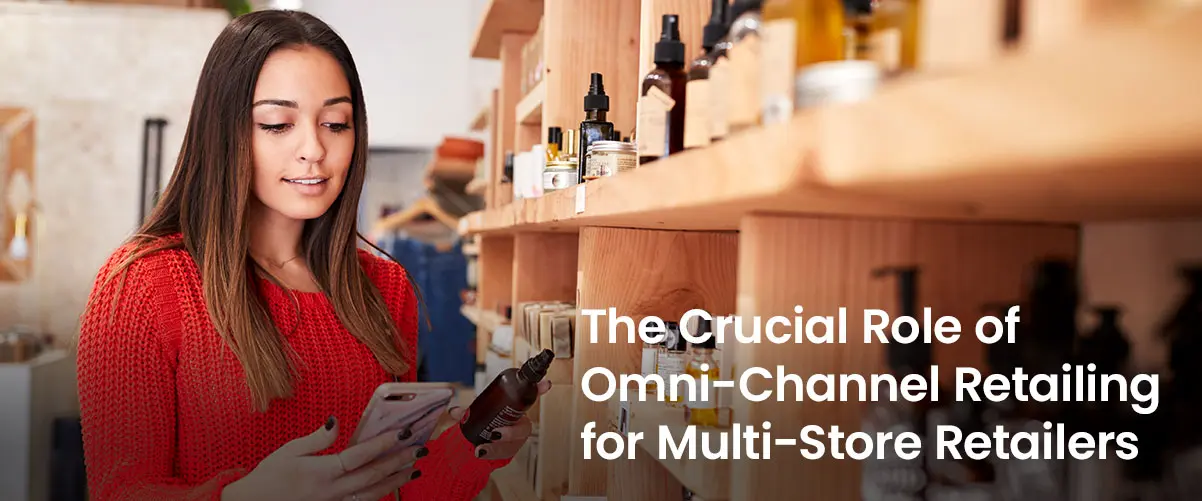
In today’s rapidly evolving retail landscape, a robust and versatile Unified Commerce retail POS solution is a cornerstone for success. With omni-channel experiences becoming the norm, choosing the right POS system is no longer a mere operational decision—it’s a strategic one. Here’s a comprehensive guide to help retailers navigate the selection process and identify the best solution to achieve retail excellence.
1. Understand Your Business Needs
Before diving into the sea of POS solutions, take a step back to assess your business requirements. Consider factors such as:
- The number of stores and their locations
- Integration needs with existing systems like ERP, CRM, and e-Commerce
- Inventory management complexities
- Customer interaction points (in-store, online, or both)
- Scalability for future growth
Having a clear understanding of your needs ensures you choose a solution that aligns with your operational goals.
2. Prioritize Omni-channel Capabilities
A Unified Commerce POS solution should seamlessly bridge the gap between in-store and online experiences. Look for features like:
- Real-time inventory visibility across all channels
- Click-and-collect and endless aisle functionalities
- Unified customer profiles and loyalty programs across touchpoints
These capabilities empower your business to deliver a consistent and delightful customer experience.
3. Evaluate Ease of Use
A complex system can hinder efficiency and frustrate both employees and customers. During the selection process, prioritize solutions that:
- Offer intuitive interfaces for quicker employee onboarding
- Simplify checkout processes to reduce transaction times
- Enable effortless management of discounts, promotions, and payment methods
The goal is to ensure a smooth operation with minimal learning curves.
4. Ensure Flexibility and Scalability
Your POS system should evolve with your business. Opt for a solution that:
- Adapts to various retail formats (e.g., pop-up stores, flagship outlets)
- Supports new payment methods like digital wallets or BNPL (Buy Now Pay Later)
- Can handle increased transaction volumes during seasonal peaks
This ensures you’re prepared to meet both current and future demands.
5. Look for Cloud-Based Solutions
Cloud technology has transformed the retail industry, making operations more agile and efficient. A cloud-based POS solution:
- Offers real-time updates and data synchronization
- Reduces IT infrastructure costs and maintenance
- Enables remote management from anywhere
Additionally, cloud-based systems are highly secure, protecting sensitive data from threats.
6. Focus on Integration Capabilities
Seamless integration with your existing tech stack is a must. Your unified commerce point of sale solution should:
- Easily connect with ERP, CRM, and other systems
- Enable data flow across departments for holistic business insights
- Support APIs for custom integrations if needed
This interconnected approach ensures streamlined processes and more informed decision-making.
7. Assess Reporting and Analytics
Retail is as much about data as it is about sales. Look for a Point of sale system that provides:
- Real-time sales tracking and performance reports
- Customer behavior insights to drive targeted marketing strategies
- Stock movement analysis to optimize inventory management
Rich analytics empower retailers to make smarter, data-driven decisions.
8. Consider Support and Training
A reliable support system ensures that any technical issues are resolved promptly. Assess the vendors:
- Training resources for your team
- Availability of round-the-clock support
- Service level agreements for uptime and troubleshooting
This minimizes disruptions and keeps operations running smoothly.
9. Review Total Cost of Ownership
While upfront costs are essential, the long-term value matters more. Evaluate:
- Software subscription costs (if cloud-based)
- Hardware requirements and replacements
- Future upgrade expenses
Choose a unified commerce POS solution that offers a competitive balance between cost and features.
10. Seek Vendor Expertise
Finally, consider the vendor’s track record and expertise in the retail industry. A provider with a deep understanding of retail challenges can guide you in maximizing the system’s potential.
Why ETP Unify Cloud POS is Your Perfect Retail Partner
If you’re looking for a cutting-edge solution that ticks all the boxes, ETP Unify Cloud POS is the answer. Designed for modern retailers, it excels in omni-channel integration, ensuring seamless customer experiences across physical and digital touchpoints. With real-time inventory visibility, an intuitive interface, and robust analytics, ETP Unify Cloud POS empowers your team to deliver outstanding results effortlessly. Moreover, its cloud-based architecture guarantees data security and operational agility while minimizing costs.
A powerful, cloud-native platform, ETP Unify Cloud POS is not just a tool—it’s your strategic partner for navigating the complexities of unified commerce and achieving retail success.
Book an ETP Unify demo and transform your business today!









